By Kioko Kivandi
I was photographing a wounded Marabou Stork on the shores of Lake Naivasha on Saturday March 25 when a Hammerkop appeared from nowhere and rested on the shallow end of the lake.
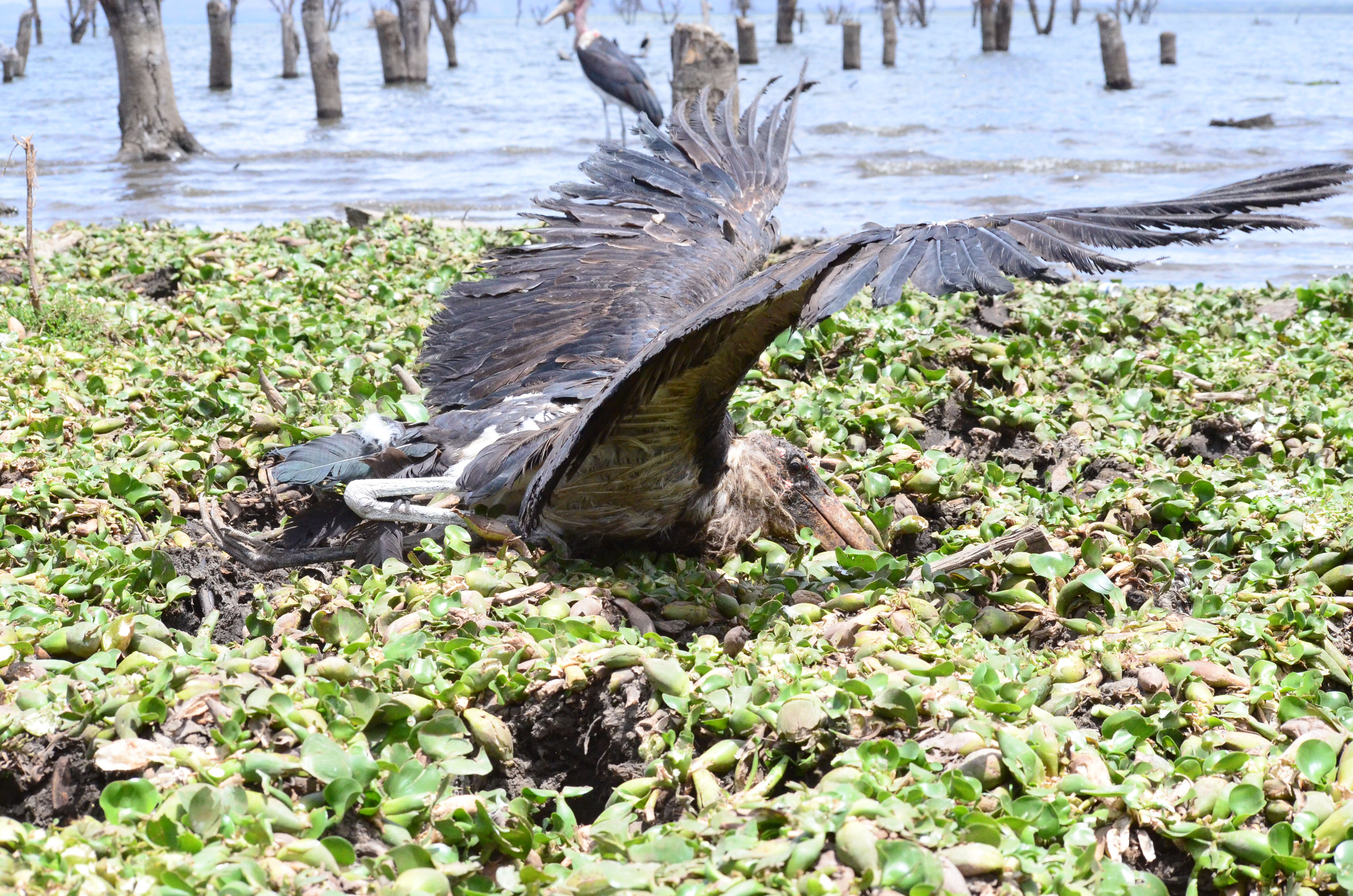
Nearer to thee: This stork had a difficulty in walking and it seemed as if it was nearing its death bed.
At first the hammerkop did not manage to steal my interest from the stork. Earlier on I had spotted another stork with a missing leg, thus, when I spotted the wounded one, I told myself, “Lake Naivasha must be a very dangerous home to storks.”
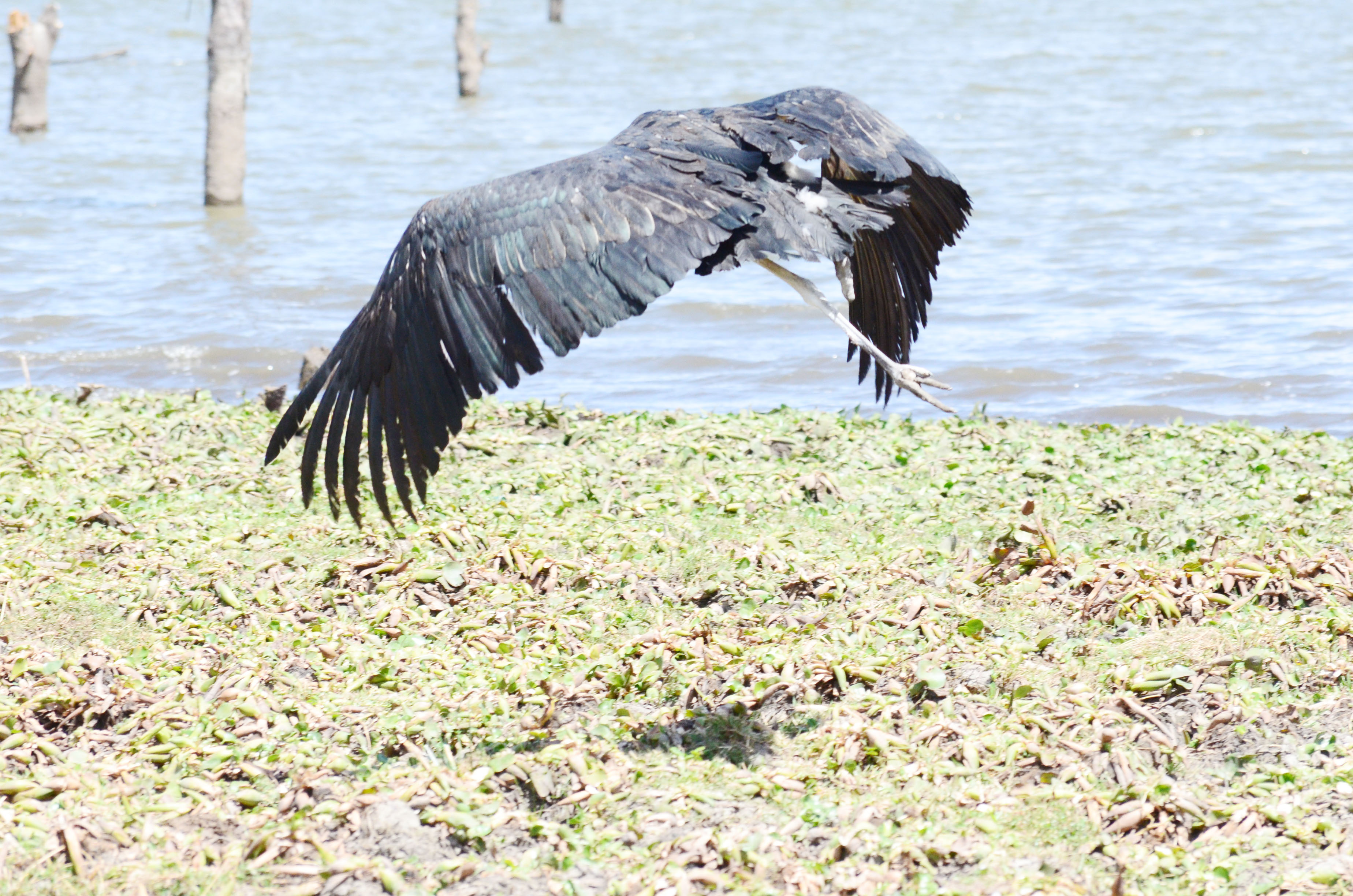
Crippled: It was not easy to establish how this stork lost its leg.
What however made me look at the hammerkop was a ‘meal’ it was gobbling all alone, perhaps fast enough before she faced competition from her fellow birds.
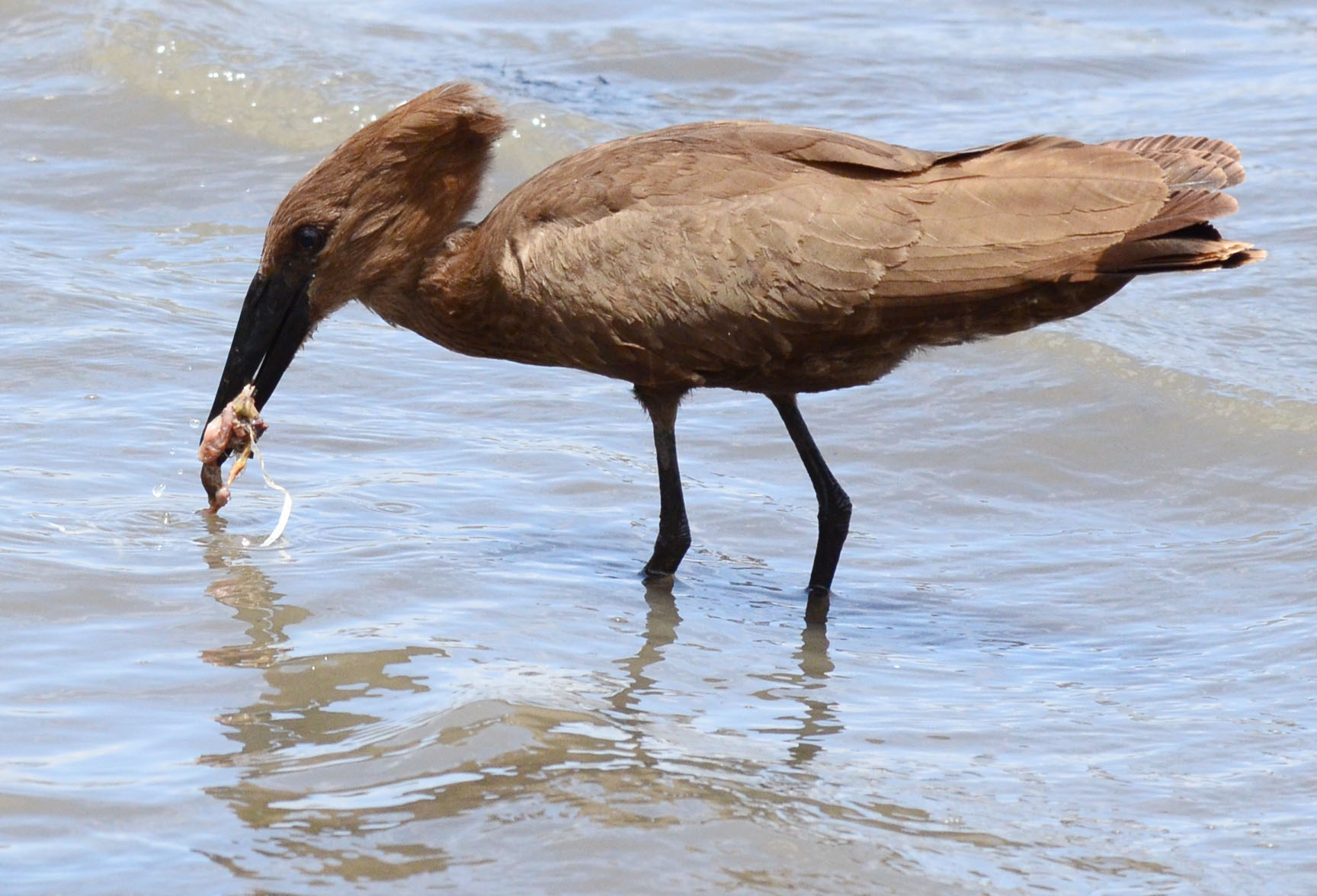
Survival for the fittest: Perhaps due to strained food sources, every bird at the lake will always want to eat whatever it comes across before other birds take notice.
But no sooner had she ‘cleared her plate’ than she discovered it was a dangerous meal.
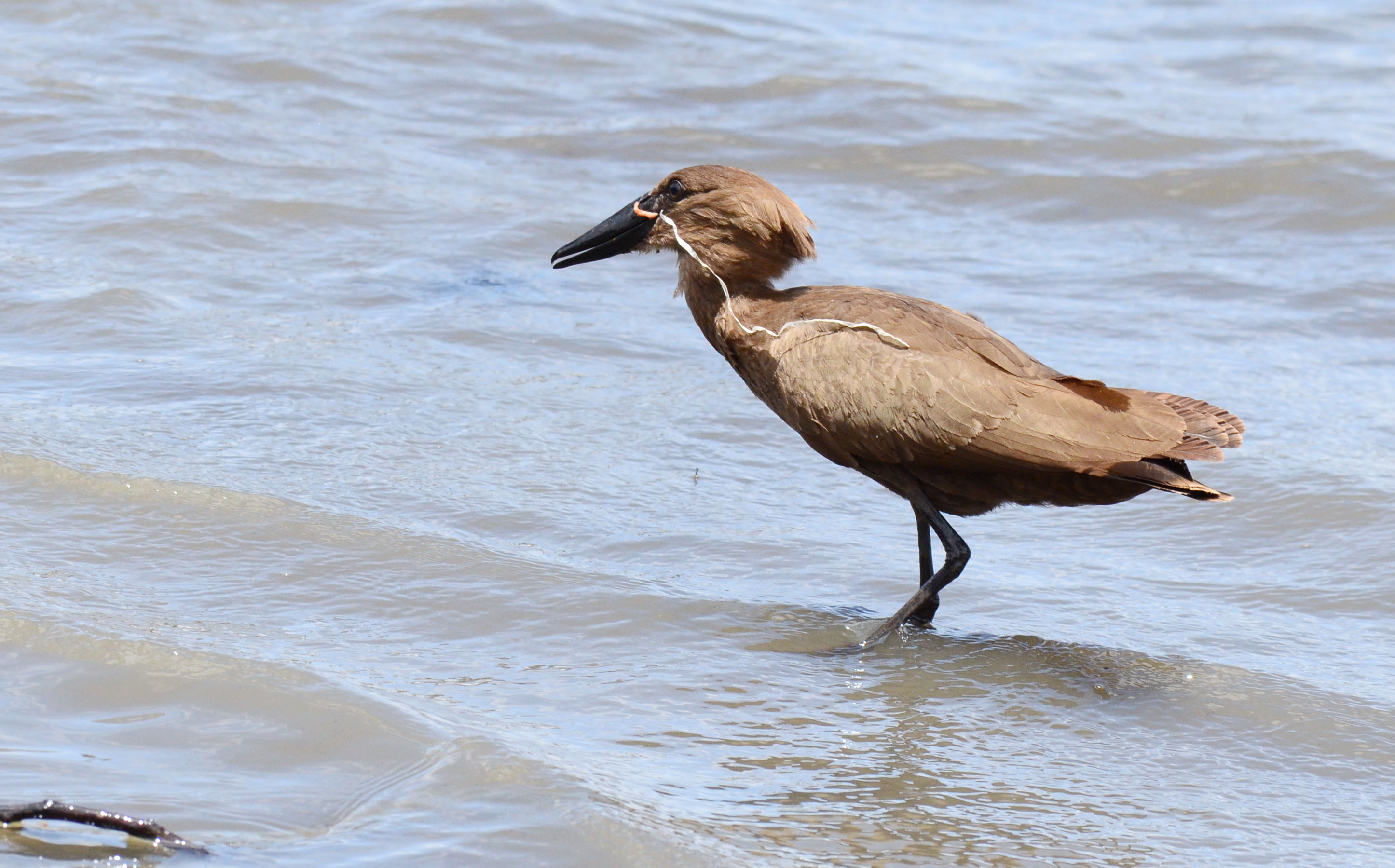
Dangerous meal: The hammerkop was unable to swallow a nylon thread tied to its meal.
All over a sudden its life was taking a tricky tingling twist: from a heavy meal to an uncertain future.
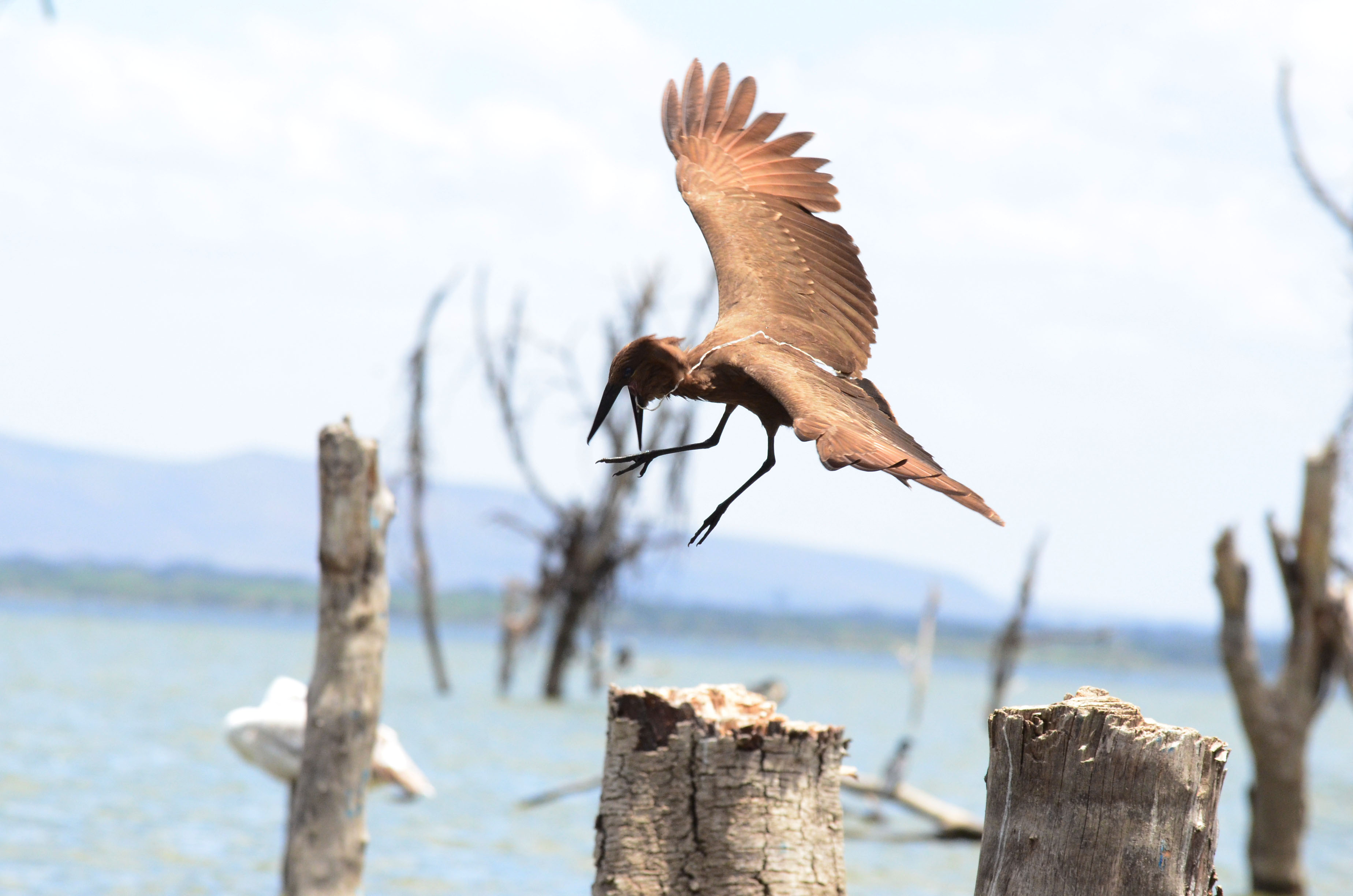
Uncertain future: Though lying beautifully on its wings like a priestly chasuble, the thread was not lesser than a hang man’s noose, waiting to smoke life out the hammerkop once it is tightened.
How I wished I could be of help.
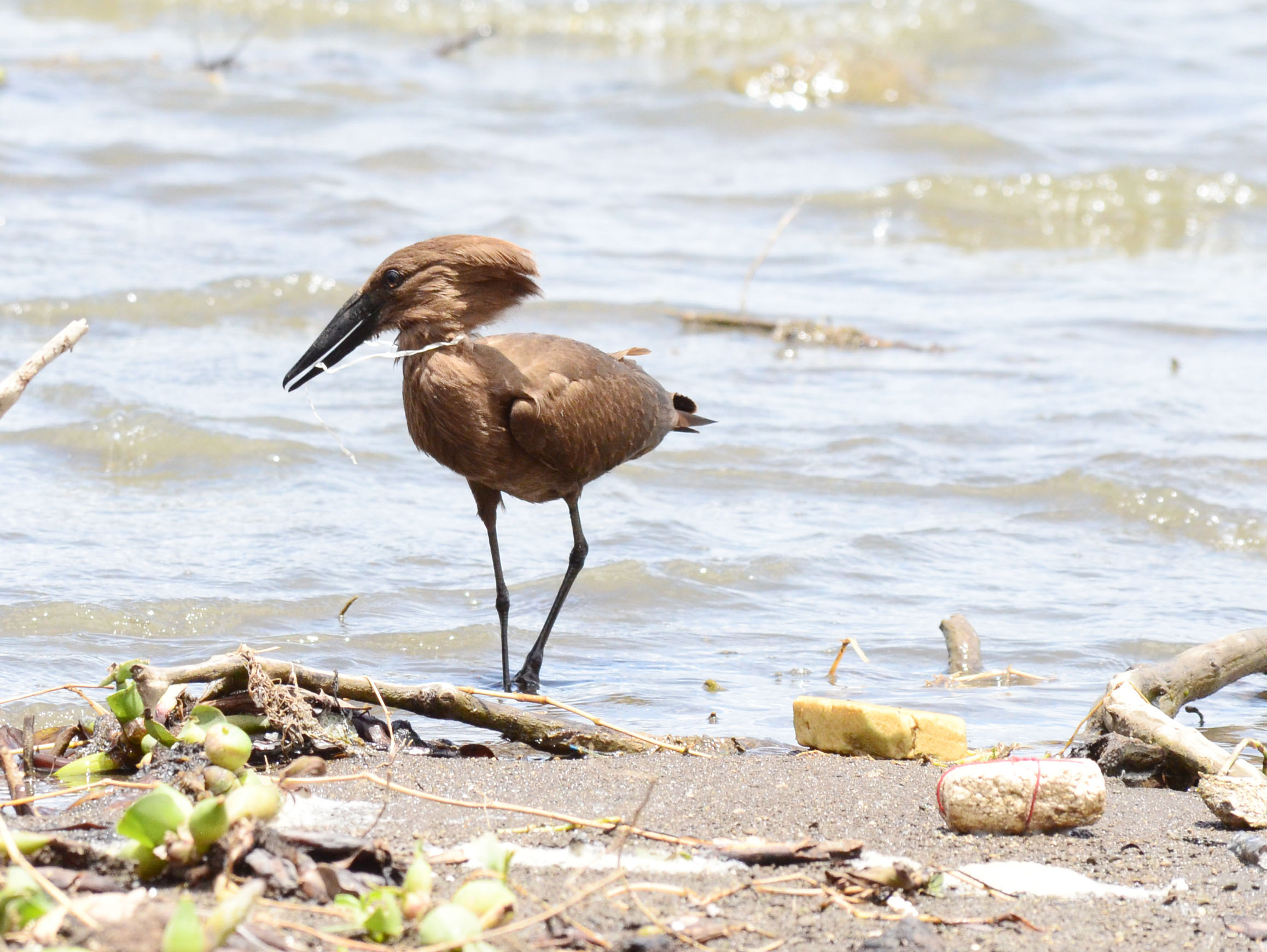
Deadly tools: Conservationists have pointed out fishing gear as one of the threats to the Lake’s ecosystem.
Like Emmanuel Sithole, the hammerkop soon became to me a victim of xenophobia, and the lake, a South Africa where men kill other men, consciously or unconsciously because they believe they are entitled to all what the world has, and that all the other people, are children of a different mother who are not worth of the same goodies.
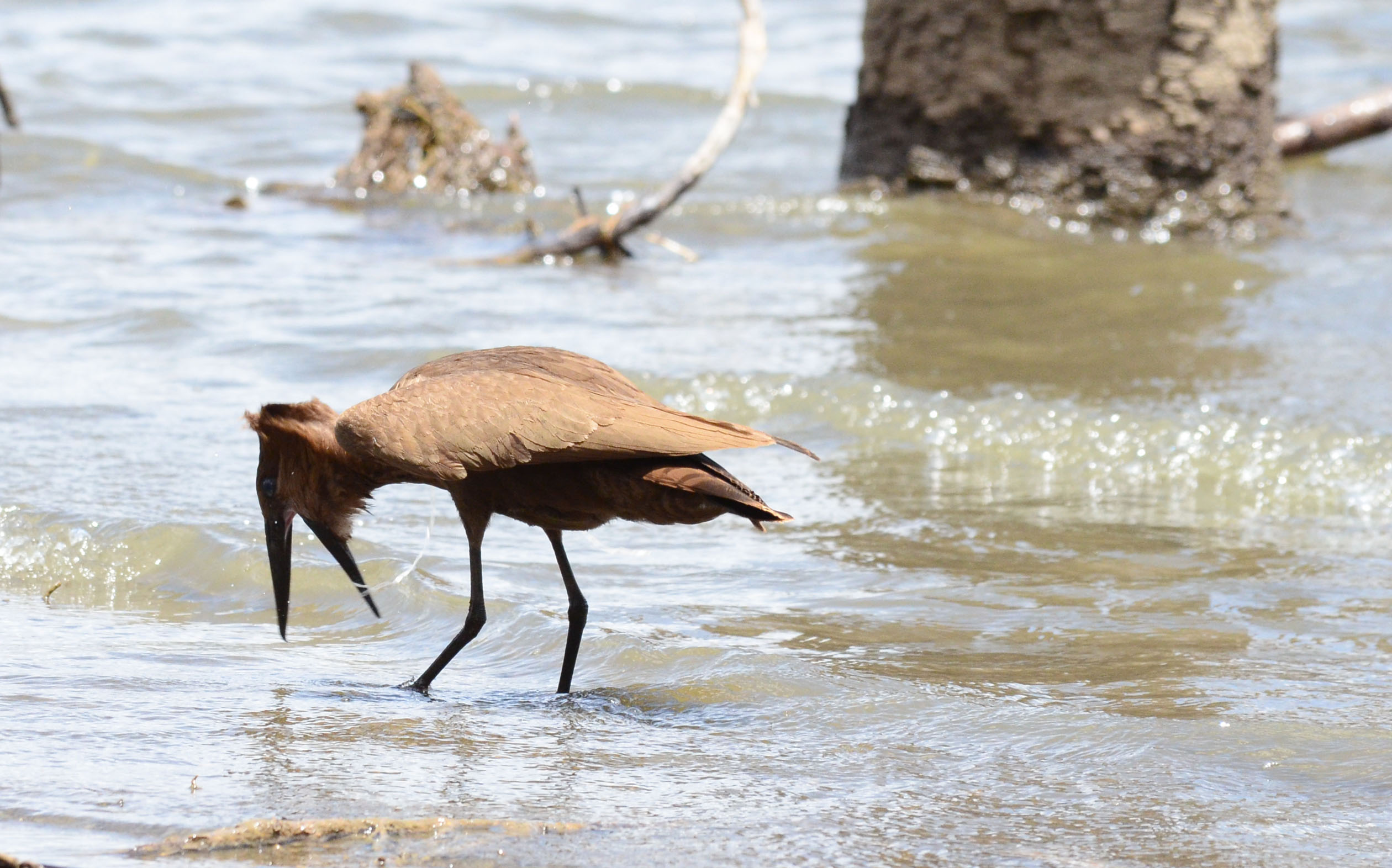
My Emmanuel Sithole: Sithole was a Mozambique national who died of a xenophobic attack in South Africa in 2015. His killing was captured in camera by James Oatway.
Lake Naivasha, a Ramsar site, is a wetland of international importance and is home to more than 350 bird species. Apart from the use of unsustainable fishing gear, chemicals emptied by horticultural farms at the lake also pollute it heavily.

Man is to blame: Thousands of animal species die daily the world over out of pollutants dropped in water bodies by man. A study has indicated that by 2050, there will be more plastics than fish in the world’s oceans.
When the hammerkop flew above me, I discovered, with a clear sky but a blurry image, its future would remain shaky for as long as that thread remained stuck in its body.
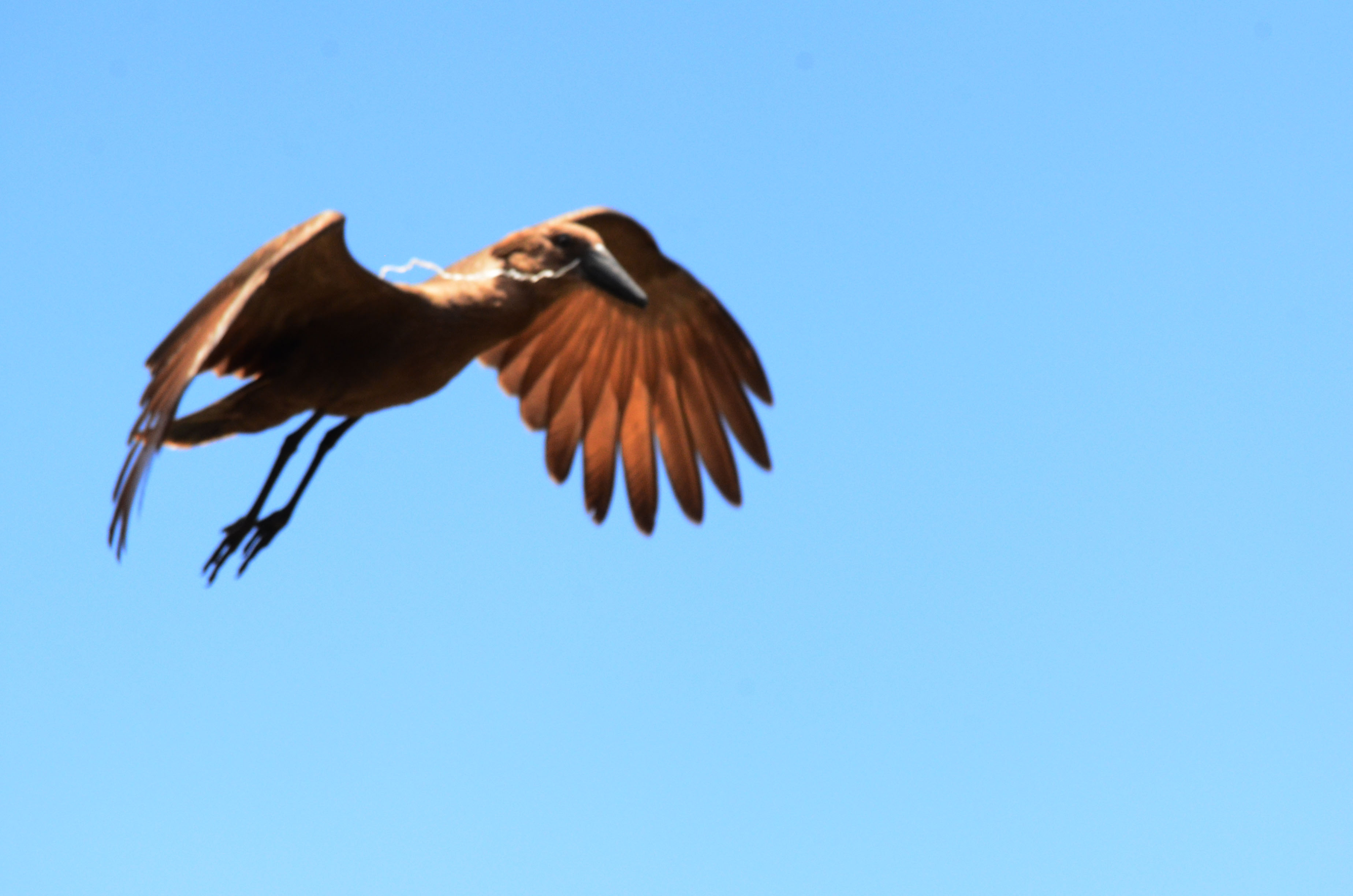
Help me ooh Lord: Such life-threatening moments, only need the help of God, or so I thought of the comment I would get from my spiritual advisor, had I asked.
Coincidentally, at the time all this was happening, a group of volunteers, including me, were at the Lake to clean it of such pollutants. The solid waste we picked on this day would later be taken to a nearby community cooker that uses plastics as fuel. If only one of us had picked this piece of nylon in time.
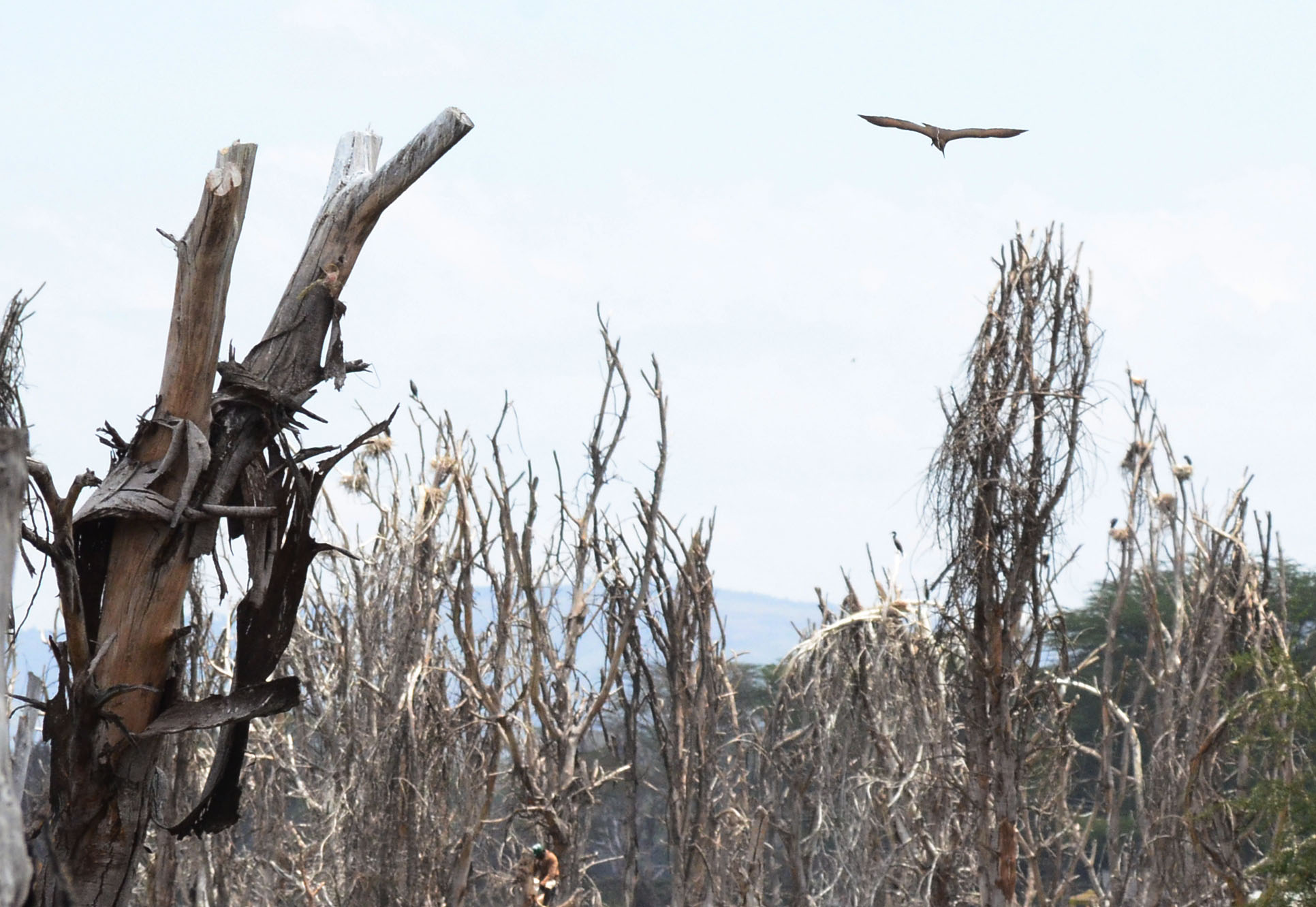
In search of help: With none of us helping it, the hammerkop flew away, to seek help from where God knows.
At the same lake, this sister (or is it brother) of hers, continued with life as if nothing had happened unaware that tomorrow its beauty and love for life would be chocked by another piece of nylon thread.
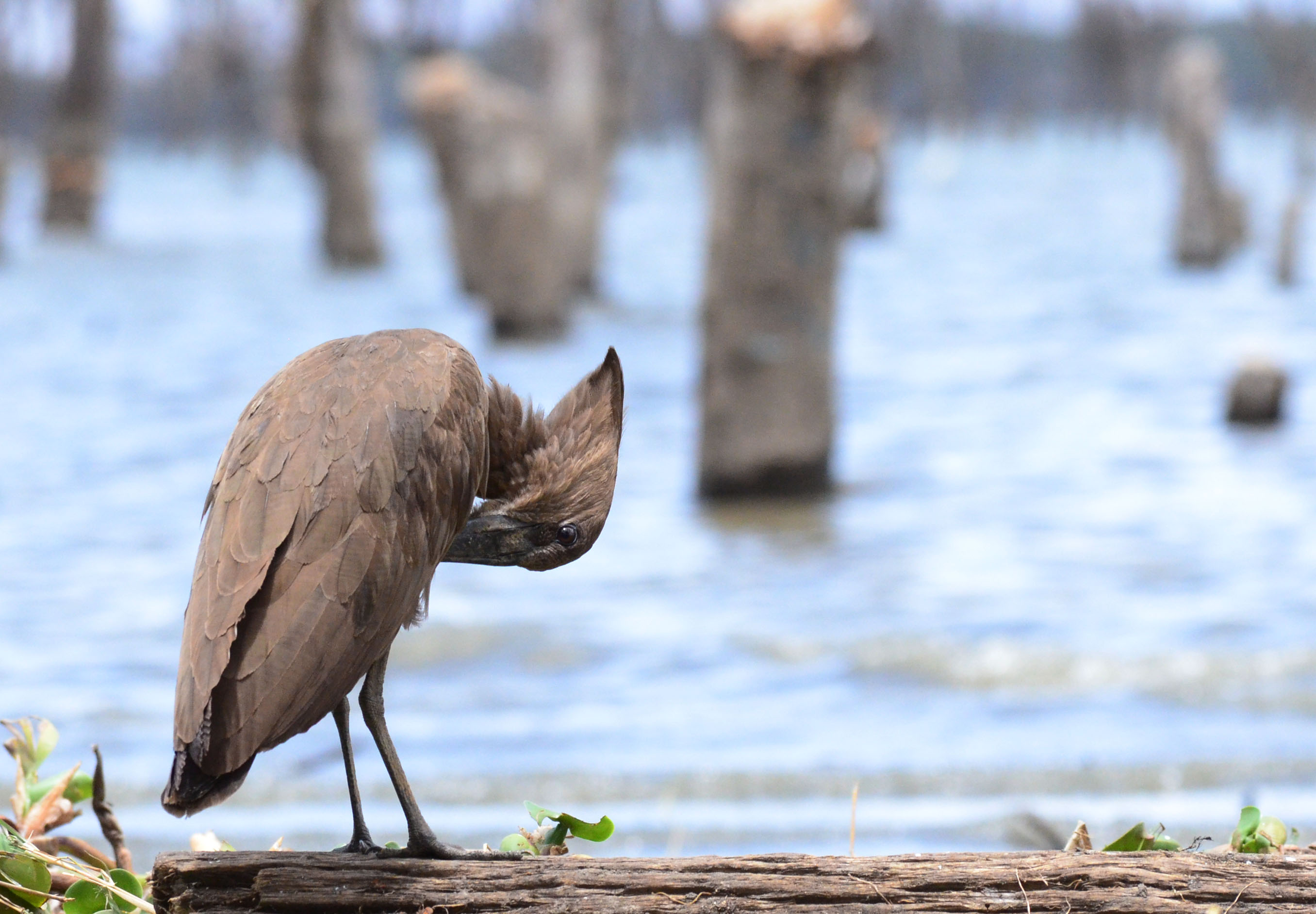
Next victim?: Too beautiful a sight until an anthropogenic act turns the tables.
All photos by Kioko Kivandi.
